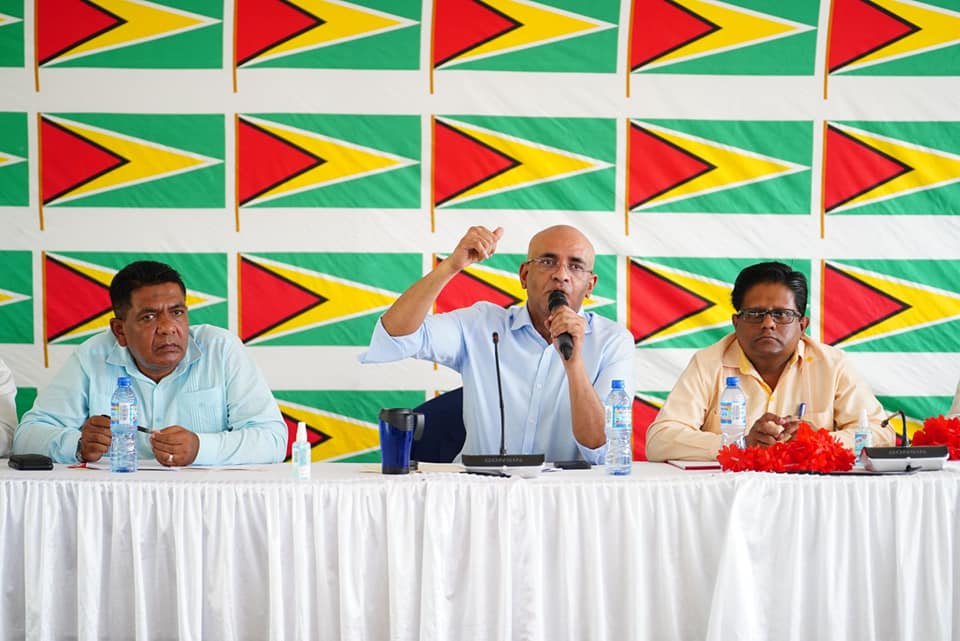April 28,2022
The Vice President made the disclosure on Wednesday afternoon in Bath Settlement, Berbice as he faced questions from one resident who complained that he has not seen an increase in his NIS benefits for more than a year.

Vice President Bharrat Jagdeo has declared that the National Insurance Scheme is currently in a bankrupt state and is therefore in no position at this time to offer increases in the pension benefits for retired workers.
The Vice President made the disclosure on Wednesday afternoon in Bath Settlement, Berbice as he faced questions from one resident who complained that he has not seen an increase in his NIS benefits for more than a year.
Mr. Jagdeo said the NIS is focused now on maintaining payments and not increasing payments and he sought to throw the blame for the current state of the NIS on the former government and the laying off of sugar workers.
“You know the NIS is bankrupt, the NIS is bankrupt basically and when APNU reduced the 7000 sugar workers, it is 7000 less that contributed to the NIS”, Mr. Jagdeo said.
The sugar company, GUYSUCO has been accused for several years of deducting monies from the workers’ salaries and not paying that over to the NIS. That claim dates back to pre-2015 and GUYSUCO since then has been taking steps to clear its debt with the NIS.
The Vice President said the NIS currently has a different focus.
“Right now, our focus is, not on increasing benefits but on keeping the current people getting their benefits, receiving them and that is the focus. So right now, it is not the focus on increasing but to ensure current people, that every month they ensure that those who are getting a cheque from NIS can continue getting their cheque”, he said.

Jagdeo said where there are adjustments to be made to the benefits as mandated by law, those will be made, but it should be made clear that the adjustments are different from increases.
A forensic audit of the NIS which was completed in 2016 found that billions of dollars from the NIS were invested in major government projects including the Berbice River Bridge under the Jagdeo presidency.
The audit revealed that those investments left the National Insurance Scheme in a dire financial situation and the Scheme is still to get its money back.
